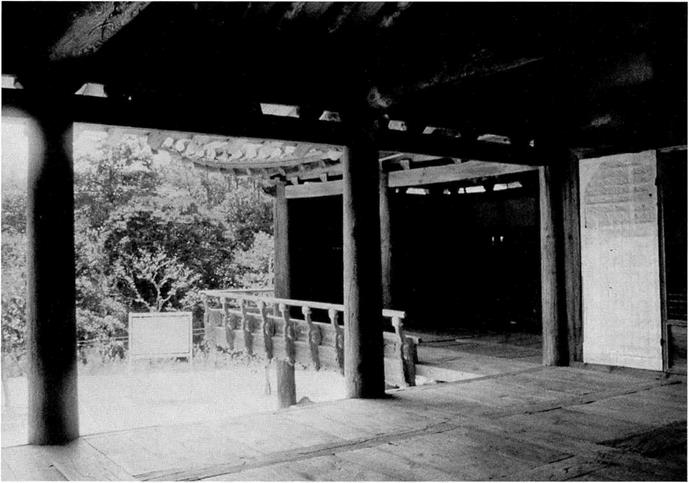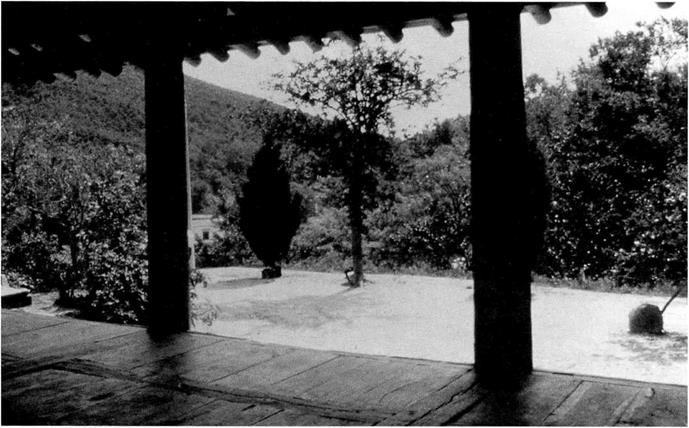In Korea it was traditionally believed that the majority of the design decisions involved in laying out a residence could be resolved simply by selecting a suitable site according to the geomantic principles of p’ungsu. The most desirable sites, known as myongdang land, were on southern slopes, as was mentioned earlier, with mountains behind them and rivers in front.
The taech’dng, with its open southern facade, is always
built on an elevated base with a raised wooden floor, and if there is a drawing room, or numaru, it is raised even higher. There are no fixed standards for how high above the ground each of these rooms should be. Perhaps the only criterion is that the floor should be set high enough for people sitting on it to enjoy the benefit of the view (Figure 110.1-110.3). Prospect provides the basis on which to build a raised-floor structure to create borrowed scenery.
This structure is open wide to the south, and has roof beams that are totally exposed, and no obstructing doors or walls that cannot easily be removed or slid out of the way. In this way, prospect becomes borrowed scenery. Unlike the wall around a Chinese yuanlin, the outer wall of the residential compound is not so high that it shuts out the scenery on the other side. Viewers inside can enjoy the panorama over the top of the wall, which has been kept to just the right height to permit a clear view. The optimal view is afforded from a seated position on the floor of the taech’dng. A person sitting in the taech’dng
|
110.2 A view from the sarang taech’dng to the питати. |
|
|
|
can also look out through the frame of the sliding doors in the wall at the greenery of the rear garden to the north (Figures 111.1-111.5).
The Korean approach to creating a garden starts from the point of “building a house in keeping with prospect,” where the entire southern slope of the hill is spread out before the viewer’s eyes (Figures 112.1-112.3).





